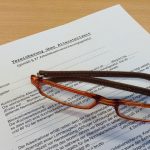Be Prepared: 7 Essential Steps to Disaster Readiness
Disasters can strike at any time, and being prepared is crucial for your safety and well-being. Here are seven steps to help you prepare for a disaster:
1. Create a Disaster Plan
Develop a comprehensive disaster plan for yourself and your family. Outline escape routes, designate meeting points, and establish a communication strategy. Make sure everyone knows the plan and practices it regularly.
2. Build an Emergency Kit
Assemble an emergency kit that includes essential supplies such as non-perishable food, water, first-aid items, flashlights, batteries, a multi-tool, blankets, and personal hygiene products. Customize the kit to meet the specific needs of your family.
3. Stay Informed
Stay informed about potential disasters in your area. Sign up for local emergency alerts and monitor weather forecasts. Understand the types of disasters that are most likely to occur in your region and educate yourself on how to respond to each.
4. Safeguard Important Documents
Make digital copies of important documents like identification, insurance policies, medical records, and financial records. Store these copies securely in the cloud or on a portable hard drive. Additionally, keep physical copies in a waterproof and fireproof container.
5. Secure Your Home
Evaluate your home for potential hazards and take steps to mitigate them. Secure heavy furniture, install smoke detectors, and reinforce doors and windows. If you live in an area prone to natural disasters like earthquakes or hurricanes, consider retrofitting your home accordingly.
6. Build a Support Network
Connect with neighbors, friends, and community organizations to establish a support network. In times of disaster, you can rely on one another for assistance, information, and resources.
7. Practice Preparedness
Regularly practice your disaster preparedness plan through drills and simulations. Ensure that family members, including children, are familiar with emergency procedures and know how to use emergency supplies.
Remember that disaster preparedness is an ongoing effort. Regularly review and update your plan and emergency kit to account for changing circumstances and needs. By taking these steps, you can significantly increase your resilience and ability to respond effectively in the face of a disaster, ensuring the safety and well-being of yourself and your loved ones.












